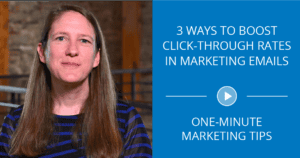How to Use Search Engine Marketing and Optimization to Boost Business
Making the differentiation between search engine marketing and optimization and search engine optimization isn’t always easy. While the goal of both search engine optimization (SEO) and search engine marketing (SEM) is the same-to increase visibility on search engine pages-they use different approaches.
The terms ‘search engine optimization’ and ‘search engine marketing’ are often confusing and may be used interchangeably with one another, but search engine optimization is an activity that falls under the umbrella of search engine marketing. SEO refers to activities that are done to optimize search results organically (i.e. unpaid), while SEM can refer to all activities, both paid and unpaid, that are done to increase page listing. Oftentimes, SEM is used to describe the paid activities that optimize a site. See how that can get confusing?
Both search engine optimization and search engine marketing work to increase the ranking or visibility of your website on the search engine results page, the page that appears after you do a search. Everyone vies to hold the #1 spot on the first page of the search engine results page. But that’s hard. Really hard. So, it’s best to start with a goal of improving your ranking.
Do I Need to Use Both Search Engine Marketing and Optimization for my Business?
Search engine optimization and search engine marketing are complimentary to one another. Think of search engine optimization and search engine marketing as peanut butter and jelly – you can have one without the other, but they are not as good apart. SEO is a long-term approach to gaining search traffic, while SEM is better suited for immediate results. SEO helps you achieve higher listings organically, but SEM allows a more targeted approach. For this reason, both search engine marketing and optimization and search engine optimization should be used together for optimal business-to-business search marketing.
Search engine optimization includes all of the actions that are taken to improve organic page listings. When a site is optimized, Google automatically lists it higher on the SERP, meaning you have a higher likelihood for clicks and increased traffic. Some common search engine optimization tactics include:
- Quality writing
- Responsive design
- Relevant images or video
- Keyword research supported content
Search engine marketing includes paid activities that are included in advertising. These terms may be used interchangeably with one another:
- Pay-per-click (PPC)
- Google AdWords, a service that allows PPC
- Paid search advertising
Using search engine marketing, you can target specific audiences by demographics like:
- Age
- Interests
- Gender
- Income level
Targeting ads for your audience allows you to increase traffic from relevant users, and reach customers who are more likely to buy from your site. Also, search engine marketing can use data that is collected through search engine optimization to improve the performance of paid ads. You can review successful keywords from your SEO efforts and incorporate them your your ads for SEM. PPC management for small business is largely experimental at first, and using information collected from SEO can help streamline the process.
Using both search engine optimization and search engine marketing is the best approach for success. Companies that have both an organic listing and a paid listing tend to perform better. A Neilson study showed that companies who show in the organic listings only receive 60 percent of clicks, while businesses that appear in both paid and organic listings receive 92 percent of total clicks.
As you can see, a mix of search engine optimization and paid search engine marketing will help increase website traffic not only immediately, but in the long-term as well.
Are you interested in learning more about how search engine marketing and optimization and SEO can help improve your business?




